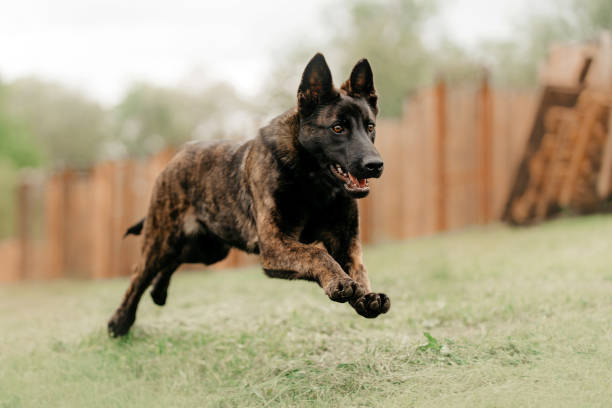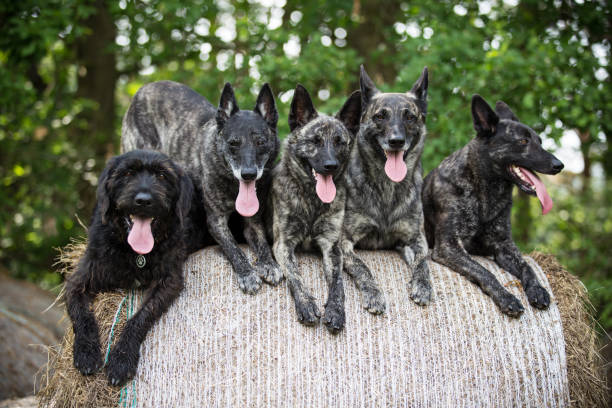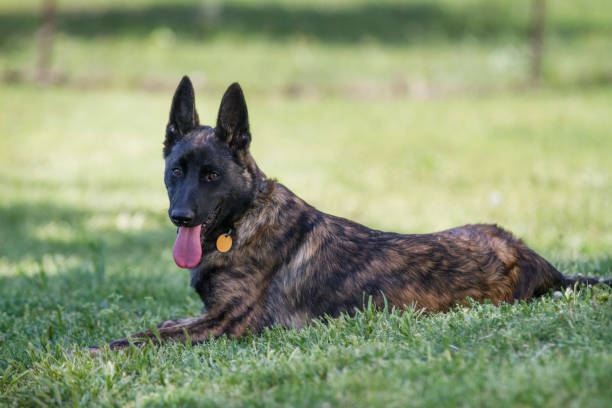Dutch Shepherd

Breed History:
The Dutch Shepherd originated in the Netherlands during the early 19th century as an all-purpose farm dog, used for herding sheep, guarding property, and pulling carts. Developed by rural farmers, it had to be hardy, intelligent, and versatile to adapt to the rigours of farm life.
As industrialisation reduced the need for traditional herding dogs, the breed nearly went extinct. However, enthusiasts revived it by promoting its use in police, military, and search-and-rescue work. Today, the Dutch Shepherd is prized for its trainability, work ethic, and loyalty, making it a favourite among working dog professionals.
Though still relatively rare outside Europe, it is gaining popularity worldwide for its strong performance in obedience, protection, and sport.
Considering adopting a Dutch Shepherd or a similar shepherd breed? Check out our page "How to look after a German Shepherd" detailing what to consider before adopting and our recommended products for a German Shepherd and other shepherd breeds.
|
Gender |
Height |
Weight |
|
Male |
57-62 cm |
30-40 kg |
|
Female |
55-60 cm |
25-35 kg |
Size – Medium-Large
Life Expectancy: 11–14 years

Breed Appearance:
The Dutch Shepherd is a well-balanced, athletic dog with a strong, muscular frame and a confident stance. Its most distinctive feature is its brindle coat, which comes in three types: short-haired, long-haired, and rough-haired. The brindling can be golden or silver, and always includes dark striping.
They have a wedge-shaped head, medium-sized, erect ears, and dark, intelligent eyes. The tail is carried naturally and is slightly curved when in motion. Overall, the breed has a clean, powerful look with a natural, no-frills appearance ideal for working roles.
Breed Type – Working/Police/Family Protection:
Originally bred for farm work, the Dutch Shepherd has evolved into a premier working dog, excelling in police, military, K9 sport, and search-and-rescue operations. It is also loyal and loving with its family, making it a solid choice for active households.
Highly alert, protective, and devoted, this breed naturally guards its home but is not typically aggressive without cause. With proper socialisation, Dutch Shepherds are good with children and can coexist peacefully with other dogs.

Training:
This breed is highly intelligent, eager to please, and fast-learning—ideal for experienced handlers. Dutch Shepherds thrive on structure, challenge, and engagement, performing exceptionally in obedience, agility, tracking, and protection sports.
Training must begin early and include socialisation with people and other animals. Positive reinforcement, consistency, and varied training routines work best. Without sufficient stimulation, this smart breed may become bored or overly self-directed.
Health & Care:
The Dutch Shepherd is generally a robust and healthy breed, with a broad genetic base due to careful breeding. However, some lines may be prone to:
-
Hip dysplasia
-
Allergies or skin sensitivities (especially in short-haired types)
-
Thyroid conditions
-
Goniodysplasia (in rough-coated types)
Regular veterinary care, balanced nutrition, and joint support in older dogs help maintain long-term health. Ethical breeders conduct necessary health screenings.

Living Conditions:
Dutch Shepherds adapt well to different living situations if their physical and mental needs are met. They do best in homes with space to move and an active lifestyle. While they can live in apartments, it's only suitable if they receive daily, structured exercise and training.
They form strong bonds with their families and do not do well with extended isolation. A secure yard, routine, and active involvement in family life are essential for their happiness.
Exercise:
The Dutch Shepherd is a high-energy breed that requires 1.5 to 2 hours of daily exercise. This should include a combination of physical activity and mental challenges like training drills, scent work, or obstacle courses.
Without proper stimulation, they may become restless, vocal, or destructive. This is a breed that thrives on having a job to do—whether herding, obedience work, or advanced tricks.
Grooming:
Grooming needs vary by coat type:
-
Short-haired: Weekly brushing; heavier during seasonal shedding.
-
Long-haired: Requires brushing several times a week to prevent mats.
-
Rough-haired: Needs occasional hand-stripping and regular brushing.
Bathing is occasional, and routine care (nails, ears, teeth) is standard. The breed is clean and odour-free when properly maintained.

Advantages:
-
Highly intelligent and trainable; excels in working roles
-
Loyal and protective without being overly aggressive
-
The brindle coat is striking and low-maintenance in short-haired types
-
Energetic and athletic—great for active owners
-
Versatile in obedience, protection, and dog sports
-
Generally healthy and long-lived for a medium-large breed
Disadvantages:
-
Requires significant daily physical and mental stimulation
-
Not suitable for sedentary or inexperienced owners
-
Can become destructive or hyperactive if under-stimulated
-
Needs early socialisation to prevent reactivity or aloofness
-
Rough- and long-haired types require more grooming
-
May be wary of strangers without consistent training

